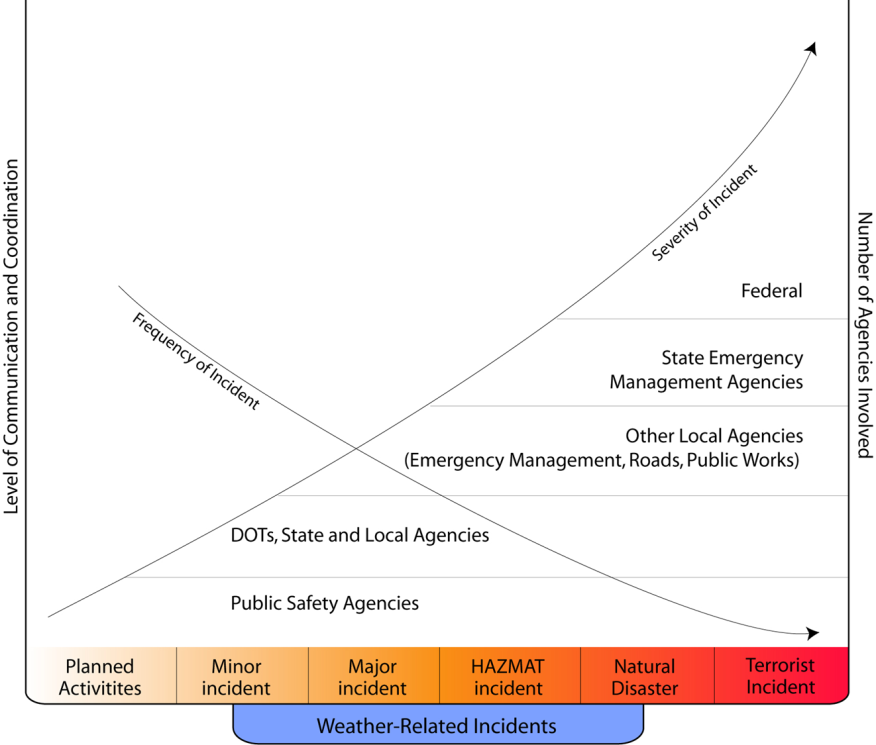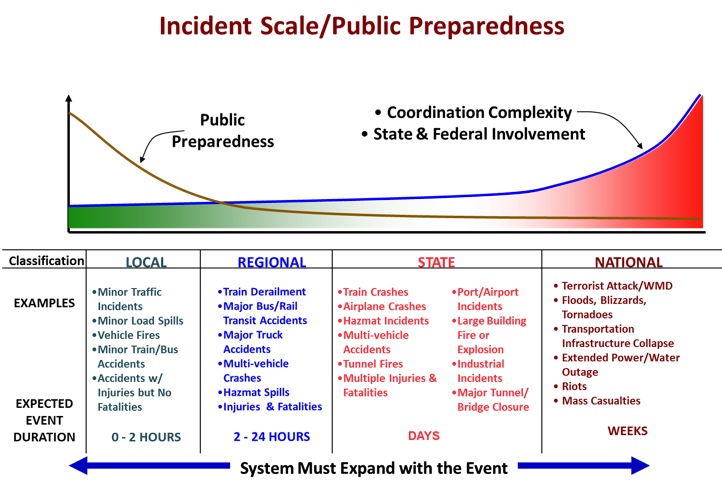
Road Network Operations
& Intelligent Transport Systems
A guide for practitioners!

Road Network Operations
& Intelligent Transport Systems
A guide for practitioners!
Traffic incidents occur all the time. Events that are more serious in nature are commonly referred to as “emergency events”. Emergency Management brings together different stakeholders to respond to, and manage, emergency events.
Emergency events include events of which there is little or no advance notice – and known events for which the impacts are largely unpredictable – such as a hurricane/typhoon/cyclone. (See Security Threats)
The scope or severity, of incidents is a continuum along which the responders and managers change and the team expands according to the severity of the event. The diagram below illustrates this continuum. Whatever the severity, first-line responders generally include law enforcement, fire rescue, emergency medical services, vehicle breakdown and recovery teams – and in the transport community, the road authority’s maintenance teams and mobile Safety Service Patrols. The TCC will be involved throughout as well. The involvement of agencies providing oversight and support will change as the severity increases – to include other stakeholders such as emergency managers, state and even national agencies. (See Incident Response Planning)
Normal practice is to designate an Emergency Coordination Centre from amongst the first-line responders. Often the Traffic Control Centre is well-placed to take this role. Where possible, the demarcation and allocation of responsibility for public statements, policies on the use of social media and press briefing – for different kinds of emergency, needs to be worked out in advance between those with a close interest.

A meaningful way to view this is to consider the degree of public preparedness for the levels of incidents compared with state and national preparedness. Typical types of incident for different levels of severity are shown in the Figure below. The term “incident” applies to all levels of severity but the agencies involved and extent of their response varies and increases from the left side to the right.

The task of planning for major emergencies - the Regional/ State/National events shown in the diagram above – can be broken down into different stages:
During an emergency situation the Coordination Centre or other lead organisation has various important tasks to perform:
After the emergency has passed it is important to obtain feedback on the experience and information on any operational difficulties in order to update incident response plans:
At the national level in the USA, Federal Highways Agency has brought Emergency Management to the forefront through its Emergency Transport Operations (ETO) Programme. (See http://www.ops.fhwa.dot.gov/eto_tim_pse/index.htm)
All incidents in the USA even minor traffic collisions are subject to National Incident Management System (NIMS) procedures – albeit usually on an informal basis. (See http://www.fema.gov/national-incident-management-system)